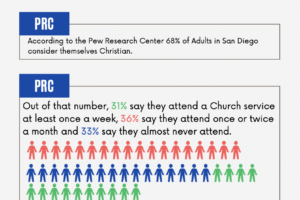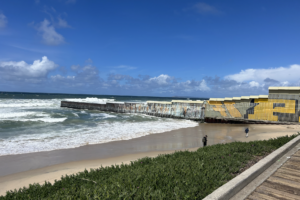Given the frustration felt by all over on-campus parking, it is no surprise that The Point has yet again taken up the issue in “Commuters lose on-campus parking spaces” (Front Page, Sept. 22). While the title is misleading—commuters have not lost spaces and the article offers nothing to suggest otherwise—the reported figures for campus population, registered vehicles and parking spaces are accurate. And while numbers look bad—the number of registered cars exceeds the number of parking spaces—they don’t tell the whole story.
In reality, not every registered vehicle is on campus at once. Class and work schedules vary. In fact, the ebb and flow of available parking is rather predictable. Some people commute only on Tuesdays and Thursdays, others only on Mondays, Wednesdays and Fridays. Some people work early, some people work late. Nearly everyone is here for chapel. And on Fridays some lots resemble ghost towns.
Consider this: in all the coming and going, never is every campus parking space occupied. Of course there are few open spaces during peak hours but they do exist, usually near the southern residence halls. And yes, that includes Young.
For those who are in a hurry—isn’t everyone?—that fact is of little consolation. The frustration felt by both the student circling the parking structure for twenty minutes and the faculty member walking up from Nease is real. So rather than coldly suggest everyone just get over it and arrive to campus earlier (still not a bad idea), we suggest a different take on the situation.
First, let’s appreciate how lucky we actually are. Anyone who has taken or taught classes at SDSU or at Mesa College knows it’s not unusual to have to walk up to a mile to/from your car. And that’s with parking permit fees in the hundreds of dollars each year! Becoming accustomed to walking/biking/ skateboarding further to our destination will do wonders for our stress levels and our waistlines, and a shuttle is available for those who still prefer motorized transport.
Second, let’s consider the cost of the most obvious solution: more parking. With increased energy and labor costs, among other things, money is already tight. A new science building, improvements to residence halls, increased wages and student scholarships all seem like wiser expenditures than another layer of concrete and steel somewhere on campus. Consider that ‘prioritization.’
Third, let’s build a sense of community and not one of individual entitlement. When residents and employees park in commuter spaces and commuters park in employee spaces, it only adds to the frustration felt by all. Treating parking like a zero-sum game fails to recognize that everyone is dealing with the same set of challenges. So while taking steps to improve our own parking experience, let’s not take shortcuts that worsen someone else’s.
There’s no magic solution here, folks. But as the saying goes: When you can’t change your circumstances, change your attitude. That may be the first of many steps toward making parking less frustrating for us all.
The Department of Public Safety







